YUKON TERRITORY

ORIGIN OF NAME: The name Yukon was first used by the Hudson's Bay Company trader John Bell in 1846. He called it "Yucon," derived from the Loucheux Indian word Yuchoo, meaning "the greatest river."
ORGANIZED: 13 June 1898.
CAPITAL: Whitehorse.
COAT OF ARMS: The blue and white wavy vertical stripes symbolize the Yukon River, while the twin red peaks represent the mountains and the gold circles stand for the mineral wealth of the territory. The red Cross of St. George honors the early British explorers and traders; the patterned circle centered on the cross represents fur trading. The crest is topped by a black and white malamute dog, which played an important role in the early history and development of the Yukon.
FLAG: Is divided into three panels: green at the mast (symbolizing forests), white in the center (representing snow), and blue at the fly (signifying water). On the white panel (which is 50 percent wider than the other two panels) the territorial coat of arms appears above a wreath of fireweed.
FLORAL EMBLEM: Fireweed.
TARTAN: Green, dark blue, magenta, yellow, and white on a light blue background.
TERRITORIAL BIRD: Common raven.
TIME: 4 AM PST = noon GMT.
1 LOCATION AND SIZE
The Yukon Territory in Canada's northwest covers 186,660 square miles (483,450 square kilometers). The perimeters of this mountainous territory form a rough triangle bordered on the east by the Northwest Territories, on the south by British Columbia, and on the west by the US state of Alaska. The northern tip of the triangle meets the chilly waters of the Beaufort Sea. Mount Logan, Canada's highest peak (and North America's second-highest) at 19,537 feet (5,951 meters), is located in southwestern Yukon.
2 TOPOGRAPHY
The Yukon can be divided into two broad geographical regions: taiga and tundra. Taiga is the boreal forest belt (typified by stands of pine, aspen, poplar, and birch trees) that circles the world in the subarctic zone, including most of the Yukon. Tundra is the vast, rocky plain in the arctic regions, where the extreme climate has stunted vegetation. The Yukon River is the fifth-longest in North America.
3 CLIMATE
The Yukon has a subarctic climate. The high altitude of much of the territory and the semiarid climate provide relatively warm summers with temperatures frequently reaching 77° F (25° C ) or more during the long summer days. In winter the temperature ranges between 39° F and -58° F (4° C and -50° C ) in the south and slightly colder farther north. The warmest recorded temperature in the Yukon was 97° F (36.1° C ) on 14 June 1969 at Mayo; the coldest was -81° F (-63° C ) on 3 February 1947 at Snag. Above the Arctic Circle (latitude 66 north), the Yukon is known as "the land of the midnight sun" because for three months in summer, sunlight is almost continuous. In winter, however, darkness sets in, and the light of day is not seen for a quarter of the year.
4 PLANTS AND ANIMALS
The Yukon's mountains are home to woodland caribou, lynxes, black bears, and Dall's sheep. Moose, gray wolves, golden eagles, and gyrfalcons also inhabit the Yukon. The short growing season produces an explosion of small wildflowers every year. Edible vegetation includes wild raspberries and strawberries, mossberries, and dewberries.
Yukon Territory Population Profile
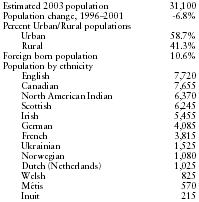
| Estimated 2003 population | 31,100 |
| Population change, 1996–2001 | -6.8% |
| Percent Urban/Rural populations | |
| Urban | 58.7% |
| Rural | 41.3% |
| Foreign born population | 10.6% |
| Population by ethnicity | |
| English | 7,720 |
| Canadian | 7,655 |
| North American Indian | 6,370 |
| Scottish | 6,245 |
| Irish | 5,455 |
| German | 4,085 |
| French | 3,815 |
| Ukrainian | 1,525 |
| Norwegian | 1,080 |
| Dutch (Netherlands) | 1,025 |
| Welsh | 825 |
| Métis | 570 |
| Inuit | 215 |
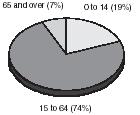

| City/Town | Population, 2002 |
| Whitehorse | 22,131 |
| Dawson City | 1,818 |
| Watson Lake | 1,555 |
| Haines Junction | 805 |
| Carmacks | 424 |
| Mayo | 418 |
| Teslin | 401 |
5 ENVIRONMENTAL PROTECTION
The Yukon Department of the Environment oversees the management and use of the province's renewable resources and environment. Releases of nitrogen dioxide and carbon monoxide (gases that cause smog) annually total around 17,000 tons, while emissions of sulfur dioxide and nitrogen oxide compounds annually amount to some 2,000 tons. About 3 percent of the territorial budget is spent on
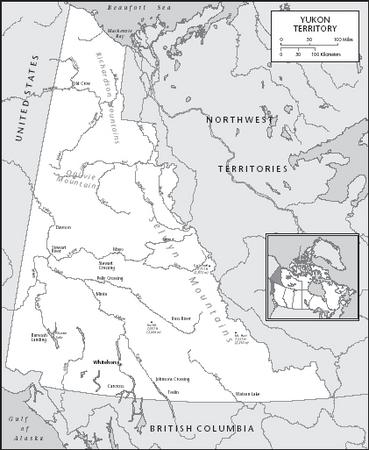
6 POPULATION
As of 2001, 28,674 people lived in the Yukon; only Nunavut had a smaller population. Whitehorse, Yukon's capital city, had a population of 16,843 in 2001. Major towns include Dawson City, Watson Lake, and Haines Junction.
Between 1991 and 2001, the median age of Yukon's population grew from 31.0 years to 36.1 years. The national average was 37.6 years. Seniors aged 65 and older accounted for only 6 percent of the population.
7 ETHNIC GROUPS
Some 22 percent of the population are Aboriginals (Native Peoples). The Yukon's vast interior forests were occupied by the Athapaskans, whose cultural and linguistic traditions go back more than 1,000 years. The distinct groups of Athapaskan Indians are Gwitch'in, Han, Tutchone, Upper Tanana, Kaska, and Tagish. The Tlingit people were originally from the coast.
8 LANGUAGES
In 2001, English was reported as the mother tongue of 86.2 percent of the Yukon's residents, while 3.1 percent declared French as their first language and 9.6 percent had other first languages (mostly Athapaskan dialects). About 1.1 percent of the population spoke two or more languages.
9 RELIGIONS
Over 33 percent of the population—or about 9,485 people—are Protestant, including Anglicans, members of the United Church of Canada, Baptists, Lutherans, Pentecostals, and Presbyterians. The Yukon also has about 6,015 Catholics. There are 150 people or fewer of each of the following: Eastern Orthodox, Jews, Muslims, Buddhists, Sikhs, and Hindus. About 38.6 percent of the population—nearly 11,015 people—have no religious affiliation.
10 TRANSPORTATION
During World War II (1939–45), the United States built the Alaska Highway, creating a new overland transportation route. The Alaska Highway traverses southern Yukon and links Watson Lake with Whitehorse before continuing on to Alaska. In 1979, the Canadian government opened the Dempster Highway, Canada's first all-weather road to cross the Arctic Circle. The paved Klondike Highway links Dawson with Whitehorse and is the primary north-south road. In 2003, the Yukon had 27,118 registered road motor vehicles, 257 buses, 448 motorcycles and mopeds, and 7,168 trailers.
11 HISTORY
Exploration of the Yukon
Eighteenth-century Russian traders were the first modern Europeans to travel to the area now known as the Yukon Territory.
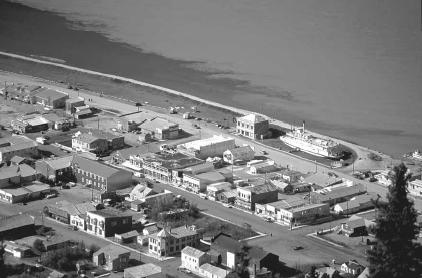
In 1896, a major gold discovery was made near Dawson City by prospector George Carmack and two native North Americans, Skookum Jim and Tagish Charlie. News of the discovery reached other parts of North America and Europe the next year, prompting huge numbers of prospectors (explorers searching for gold) to make their way to the Klondike region of the Yukon.
The Gold Rush
Dawson City, located on the bank of the Yukon and Klondike rivers, was no more than a small frontier settlement before the gold rush. By 1898, however, its population had grown to 40,000, making it the largest city west of Winnipeg in Manitoba, Canada. To serve this growing population, numerous dance halls, saloons, hotels, and boarding houses sprang up in Dawson City, but crime accompanied the economic boom in the area. The Canadian federal government decided to give the Yukon more control over its own affairs. In 1898, the Yukon Territory was officially established, and Dawson City became the capital of the province.
As gold resources became depleted and prospectors left to seek their fortunes at other locations, the territory's growth came to a screeching halt. Between 1901 and 1911, the Yukon's population fell from 27,000 to only 8,500. Some mining did continue—coal was found at Carmacks, and silver and lead mining began around 1913—but there was little to attract new industry to the Yukon or to encourage settlement there.
During World War II (1939-1945), though, the Yukon Territory generated a lot of interest. The American government, fearing a Japanese invasion from the West, wanted to build a road to connect Alaska with the other US states. With Canada's permission, construction of the 2,325-kilometer-long Alaska Highway began in 1942. This project brought thousands of temporary citizens to the Yukon, as did the Canadian Oil Pipeline, also constructed during World War II. By 1951, the Yukon's population had grown to 9,000, and in 1953, Whitehorse—with a larger population than Dawson City and a better location on the Alaska Highway—became the province's new capital. The 1950s and 1960s saw the construction of a major hydroelectric plant in Whitehorse, the beginning of the construction of the Dempster Highway, and the growth of employment opportunities in tourism and government services. Slowly, the Yukon's population increased.
Native American Land Claims
Yukon Indian land claims became a heated issue in the 1970s. The native people stated that since the time of European settlement, their culture, land rights, and ways of life had been threatened. It was not until 1993 that the Council for Yukon Indians, the Government of Canada, and the Yukon territorial government signed an Umbrella Final Agreement that set out the terms for final land claim settlements in the Territory. This and similar agreements with other tribes have served to protect the rights of the region's Native Americans.
In 1993, the Canada-Yukon Oil and Gas Accord was signed, granting control over onshore oil and gas resources to the Yukon government. Other agreements have been signed to transfer authority and control in forestry, fishery, and transportation. Economic development remains a challenge in the Yukon, however. The mineral industry is still the basis of the territory's economy, and the government continues its work to strengthen other industries such as renewable resources and tourism.
In 2004, the Yukon was aiming to build a sustainable and competitive economy. The Yukon was looking forward to developing regional, national, and global markets for its goods and services. With abundant natural resources and hardy and talented people, the Yukon was looking optimistically to the future.
12 PROVINCIAL GOVERNMENT
In the Yukon, political power rests with elected representatives. Although a federally appointed commissioner is technically in charge of the administration, the role of that office has diminished and generally follows the lead of the elected territorial government. An 18-seat assembly serves as the legislative body, operating under the political party system. The premier (until 2000 called the government leader) is the leader of the majority party of the assembly's elected representatives. An executive council, which operates much like a provincial cabinet, consists of appointees of the commissioner who were recommended by the government leader.
As a territory, the Yukon does not have full provincial status, although it achieved a style of government similar to that of the provinces in 1979.
13 POLITICAL PARTIES
As of the election held on 4 November 2002, standings in the Yukon Legislative Assembly by political party were as follows: Liberal Party, 1; New Democratic Party, 5; and Yukon Party, 12.
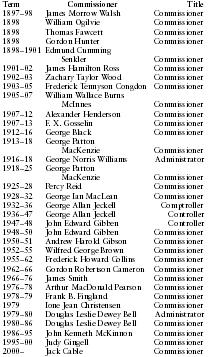
| Term | Commissioner | Title |
| 1897–98 | James Morrow Walsh | Commissioner |
| 1898 | William Ogilvie | Commissioner |
| 1898 | Thomas Fawcett | Commissioner |
| 1898 | Gordon Hunter | Commissioner |
| 1898–1901 | Edmund Cumming Senkler | Commissioner |
| 1901–02 | James Hamilton Ross | Commissioner |
| 1902–03 | Zachary Taylor Wood | Commissioner |
| 1903–05 | Frederick Tennyson Congdon | Commissioner |
| 1905–07 | William Wallace Burns McInnes | Commissioner |
| 1907–12 | Alexander Henderson | Commissioner |
| 1907–13 | F. X. Gosselin | Commissioner |
| 1912–16 | George Black | Commissioner |
| 1913–18 | George Patton MacKenzie | Commissioner |
| 1916–18 | George Norris Williams | Administrator |
| 1918–25 | George Patton MacKenzie | Commissioner |
| 1925–28 | Percy Reid | Commissioner |
| 1928–32 | George Ian MacLean | Commissioner |
| 1932–36 | George Allan Jeckell | Comptroller |
| 1936–47 | George Allan Jeckell | Controller |
| 1947–48 | John Edward Gibben | Controller |
| 1948–50 | John Edward Gibben | Commissioner |
| 1950–51 | Andrew Harold Gibson | Commissioner |
| 1952–55 | Wilfred George Brown | Commissioner |
| 1955–62 | Frederick Howard Collins | Commissioner |
| 1962–66 | Gordon Robertson Cameron | Commissioner |
| 1966–76 | James Smith | Commissioner |
| 1976–78 | Arthur MacDonald Pearson | Commissioner |
| 1978–79 | Frank B. Fingland | Commissioner |
| 1979 | Ione Jean Christensen | Commissioner |
| 1979–80 | Douglas Leslie Dewey Bell | Administrator |
| 1980–86 | Douglas Leslie Dewey Bell | Commissioner |
| 1986–95 | John Kenneth McKinnon | Commissioner |
| 1995–00 | Judy Gingell | Commissioner |
| 2000– | Jack Cable | Commissioner |

| Term | Government Leader | Party |
| 1978–85 | Christopher William Pearson | Conservative |
| 1985 | Williard Phelps | Conservative |
| 1985–92 | Anthony Penikett | New Democratic |
| 1992–96 | John L. Ostashek | Yukon |
| 1996–00 | Piers McDonald | New Democratic |
| Term | Premier | Party |
| 2000–02 | Pat Duncan | New Democratic |
| 2002– | Dennis Fentie | Yukon |
14 LOCAL GOVERNMENT
To meet municipal incorporation requirements, a village must have 300–1,000 residents; a town, 500–3,000 inhabitants; and a city, more than 2,500 residents. There is no minimum population requirement to incorporate a hamlet. There are two cities—Whitehorse and Dawson City.
15 JUDICIAL SYSTEM
The Canadian Constitution grants territorial and provincial jurisdiction over the administration of justice, and allows each territory and province to organize its own court system and police forces. The federal government has exclusive domain over cases involving trade and commerce, banking, bankruptcy, and criminal law. The Federal Court of Canada has both trial and appellate divisions for federal cases. The nine-judge Supreme Court of Canada is an appellate court that determines the constitutionality of both federal and territorial statutes. The Tax Court of Canada hears appeals of taxpayers against assessments by Revenue Canada.
The territorial court system consists of the Territorial Court, which deals with most criminal proceedings, youth matters, child protection cases, some family matters (excluding divorce), and small claims; the Yukon Supreme Court, which hears serious civil and criminal cases; and the Court of Appeal, the Yukon Territory's highest court, which hears appeals from the Territorial Court and the Yukon Supreme Court.
In 2002, there were no homicides in the Yukon. Because of the small population, the Yukon sometimes has one of the highest crime rates in Canada. In 2002, there were 3,800 violent crimes per 100,000 persons, and 7,436 property crimes per 100,000 persons.
16 MIGRATION
The Yukon was the first area in Canada to be settled by people. Anthropologists believe the ancestors of the Amerindians may have inhabited the Yukon 10,000 to 25,000 years ago when they migrated from Asia across a Bering Sea land bridge. American traders arrived after the 1867 Russian sale of Alaska to the United States. With the discovery of gold near Dawson City in 1896, the Klondike became one of the most populous regions in northwestern Canada. The gold rush of 1897 saw more than 30,000 people from the lower parts of Canada migrate to the Yukon and the Northwest Territories within one year. The sudden increase in population during the Klondike gold rush prompted the federal government to give the Yukon more control over its affairs.
In 2001, 19.2 percent of the 3,020 immigrants living in the Yukon had come from the United States, and 18.4 percent from the United Kingdom. About 28.8 percent came from Northern and Western European countries other than the United Kingdom (mostly from Germany). Some 7 percent came from Southeast Asia (mostly from Vietnam and the Philippines).
In 2001, 1.6 percent of the Yukon's residents age 5 and older were living abroad. Some 5.9 percent were living elsewhere in the Yukon, while 14 percent were living in another province. British Columbia is the leading province of origin for incoming residents and the leading province of destination for those leaving the territory for other parts of the country.
17 ECONOMY
The gold rush of the 1890s quickly transformed the Yukon into a market-oriented economy. Gold is no longer the only natural resource sought. In fact, mining for other metals has become the most important economic activity in the territory. Tourism and hydroelectricity are also important economic sectors. In 2002, the Yukon's gross domestic product (GDP) totaled C $1.25 billion, or about 0.1 percent of the national total.
18 INCOME
The average family income in 2000 was C $71,075 for a family of five. In 2000, the average weekly earnings were C $699.41.
19 INDUSTRY
Industry in the Yukon is reliant on the processing of raw materials. Food products, wood, printing and publishing, non-metallic mineral products, and chemical and chemical products are important manufacturing sectors. In 2002, the value of manufactured shipments for the Yukon Territory was C $12 million.
20 LABOR
In January 2004, the Yukon had about 14,600 persons in the labor force. That year, 13,400 residents 15 years and older were employed, and 1,200 were unemployed. The overall unemployment rate in January 2004 was 8.2 percent. The hourly minimum wage in the Yukon was C $7.20.
21 AGRICULTURE
Agriculture—expensive by North American standards—is a small but expanding industry. Although growth of the agricultural industry is limited by climate and the availability of productive land, new research programs hold promise for the future.
In 2001, there were 170 farms in the Yukon. Farms in the territories are smaller than those in the south, averaging under 150 acres. Hay accounts for three-quarters of total field crops in the territories. Reindeer, musk-oxen, and horses are found on territory farms.
22 DOMESTICATED ANIMALS
The fur trade is important for about 3 percent of the population, mainly Aboriginal. There are over 400 licensed trappers in the Yukon. Fourteen species may be trapped in the Yukon. Yukon's fur harvest is worth from C $300,000 to over C $1 million a year.
23 FISHING
A small fishing industry operates in Dawson City to export salmon. Other commercial fisheries supply local consumers.
In 2000, 4,835 residents were actively engaged in sport fishing within the province.
24 FORESTRY
About 57 percent of the total land area is covered by forests. The federal government owns all the forest land. To reduce
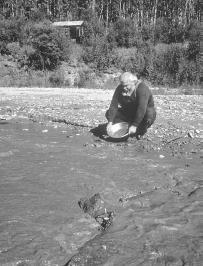
25 MINING
The principal minerals and metals produced in the Yukon are gold, silver, and sand and gravel. Gold was discovered in 1896 in the Klondike district. Mining is important to the Yukon. The total value of production in 2003 was C $36.5 million. Gold accounted for 71 percent of that value.
26 ENERGY AND POWER
Yukon Energy generates most of the electricity in the territory. It comes almost entirely from renewable sources. About 87 percent of the Yukon's electricity needs are met by hydroelectricity, and 13 percent from thermal sources. In 2002, 270,377 megawatt hours of electricity were produced by hydroelectricity, 38,000 megawatt hours by thermal energy sources, and 1,100 megawatt hours by wind power.
27 COMMERCE
In 2002, total merchandise exports for the Yukon, Nunavut, and the Northwest Territories amounted to C $1.1 billion. Total imports for the three territories amounted to C $65 million. The major export markets were Belgium, the United Kingdom, Germany, the United States, and Finland, in that order. The major import suppliers were the United States, France, Germany, the United Kingdom, and Singapore. Over 83 percent of merchandise exports from the three territories were pearls and precious stones (including diamonds).
28 PUBLIC FINANCE
The fiscal year extends from 1 April to 31 March. For fiscal year 2002/03, total revenues were C $535.2 million. Expenditures were C $590.9 million. Major expenditure areas were health and social services, education, community transportation services, justice, government services, and renewable resources.
29 TAXATION
The territorial personal income tax rate ranges from 7.04–12.76 percent. The combined federal/territorial top marginal tax rate in 2003 was 42.4 percent in 2003.
There is no territorial sales tax. A C $0.62 tax per liter is levied on gasoline. Taxes on cigarettes are C $26.40 per carton.
30 HEALTH
In 2001, there were 344 live births in the Yukon, a decrease of 7 percent from 2000. There were 134 deaths that year, a 14.1 percent decrease from 2000. Life expectancy for men in 2001 was 75.7 years, and 80.1 years for women. Reported cases of selected diseases in 2002 included chicken pox, 58; gonococcal infections, 11; giardiasis, 10; and salmonellosis, 3. Between November 1985 and June 2003, 37 people in the Yukon had become infected with HIV, the virus that causes AIDS.
31 HOUSING
The Yukon had 11,365 households in 2001. The average household size was 2.5 persons. There were 7,750 households living in single-detached houses, 5 households living in apartments in buildings with five or more stories, 910 households living in mobile homes, and 2,705 households living in other dwellings, including row houses and apartments in buildings with fewer than five stories. In 2002, C $77.8 million was invested in residential housing construction.
32 EDUCATION
As of 2004, all 28 elementary and secondary schools in the Yukon were public; enrollment in 2003–04 was 5,533, down from 5,898 in 1999. The only postsecondary institution in the territory is Yukon College, with 15 community campuses across the territory and an enrollment of 704 full-time students and 2,634 part-time students in 2003–04.
33 ARTS
The Yukon Arts Centre opened in 1992 and provides the province with a variety of professional, community, and educational events. The center houses an art gallery where an average of 14 exhibitions are displayed each year. The Frostbite Music Festival in February was started as a folk music festival, but has expanded to include many other types of music performed by Canadian and world artists. Per capita territorial spending on the arts in the Yukon in 2000/01 was C $451, the highest amount among all of Canada's provinces and territories. The national average for provincial and territorial spending on the arts was C $68.
34 LIBRARIES AND MUSEUMS
The territorial Department of Community Service oversees a system of public libraries, with Whitehorse Public Library and branches in 14 communities (Beaver Creek, Burwash Landing, Carcross, Carmacks, Dawson City, Faro, Haines Junction, Mayo, Old Crow, Pelly Crossing, Ross River, Tagish, Teslin, and Watson Lake). The Dawson City Museum and Historical Society and the MacBride Museum (located in Whitehorse) are two of the territory's larger historical museums. The Kluane Museum of Natural History (located in Burwash Landing) displays wildlife and native handicrafts.
35 COMMUNICATIONS
As of 2003, the Yukon had 4 newspapers, 6 radio stations, and 2 television stations.
36 PRESS
Newspapers include The Klondike Sun , Yukon News , and The Whitehorse Star . The Whitehorse Star has the largest circulation.
37 TOURISM, TRAVEL, AND RECREATION
Tourism, offering a wilderness experience in a unique and relatively unspoiled environment, provides a further base for jobs and services. It is estimated that around 1,900 jobs are directly dependent on tourism. In 2000, the non-resident tourism industry in the Yukon was worth C $164 million. Visitation to the Yukon was up 11 percent in 2002 compared with 2001. In 2002, there were 313,290 border crossings in the Yukon.
38 SPORTS
Local sporting organizations (for such sports as badminton, basketball, track and field, and volleyball) are popular in the territory, as are canoeing and kayaking.
39 FAMOUS YUKONERS
Martha Louise Black (1866–1957) was the Yukon's first, and Canada's second, female member of Parliament. Popular writer and historian Pierre Berton (b.1920) is a native of Whitehorse.
40 BIBLIOGRAPHY
Ferry, Steven, Blake Harris, and Liz Szynkowski. Yukon Territory. San Diego: Lucent, 2003.
Hancock, Lyn. Yukon. Minneapolis: Lerner Publications, 1996.
LeVert, Suzanne. Yukon. Philadelphia: Chelsea House, 2001.
Roy, Geoffrey. North Canada: Yukon, Northwest Territories, Nunavut. Guilford, CT: Globe Pequot, 2000.
Tempelman-Kluit, Anne. Discover Canada: Yukon. Toronto: Grolier, 1994.
Web sites
Canada Tourism Commission. Canada. http://www.canadatourism.com/index.html (accessed on March 20, 2004).
Government of Yukon, Canada. http://www.gov.yk.ca (accessed on March 20, 2004).
Yukon, Canada's True North. http://www.touryukon.com (accessed on March 20, 2004).
thank You,
Maria McDaniels
I love this!!
This one is easy to understand!! :)
I would also like to add that the sub-alpine fir is the official tree of Yukon.
Many thanks,
Lilac P. Gleeson
Vianache, AB
for helping in my project
i am done m y project because of this information